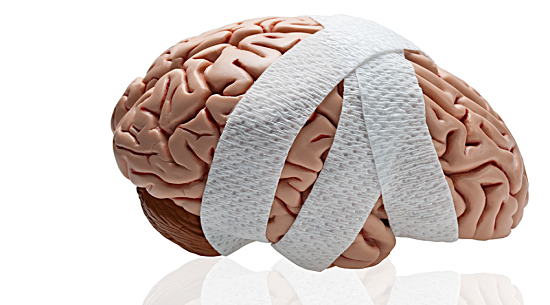UGA researchers simulate traumatic brain injuries in lab
Isabelle Blaber was out horseback riding a few days before final exams in April 2016. She was 19 at the time, a freshman at Rhodes College in Memphis, and she had been a rider since she was 5.
Isabelle Blaber was out horseback riding a few days before final exams in April 2016. She was 19 at the time, a freshman at Rhodes College in Memphis, and she had been a rider since she was 5.
But on this particular day she was on an unfamiliar horse, and things went wrong. In a failed attempt at a jump, she was thrown to the ground and suffered a hard blow to the back of her head.
Blaber remembers feeling fine immediately after the fall, and she was tempted to shrug it off. But a friend persuaded her to visit a doctor the next day, and she was fortunate she did. She had a concussion, a brain injury.
A concussion can cause headaches and, more seriously, can interfere with memory, concentration and balance.
Yet like many concussion patients, Blaber learned that her options for treatment were somewhat limited. She had to slow down her life a bit to see what happened next. “I met with the athletic trainer every day for symptom monitoring,” she says. And the doctor told her to take a break from riding.
“It was really frustrating being told what not to do,” she recalls.
The lack of therapeutic intervention has been a longstanding frustration for those who study concussions and other traumatic brain injuries. Now some Georgia researchers may be making headway in addressing the issue.
In a study published in July in the journal Nature, scientists who focus on cell regeneration at the University of Georgia reported successfully replicating some conditions of traumatic brain injuries in a Petri dish — without using an actual human brain — allowing researchers new insight into the condition.
“We thought of taking this out of the human being, because that’s where complexity confounds things,” explained the study’s lead author, Lohitash Karumbaiah, an assistant professor at the Regenerative Bioscience Center in Athens.
Simulating brain injuries in a Petri dish allowed the team to examine how different types of electrical stimulation can control, regulate and even repair the brain neurons that malfunction after a head injury. And they could do it safely, without causing further risk to any brain injury patient.
It will take some time before the application of these electrical stimulations can be re-created in real patients, but the early findings are intriguing to some, including local neurosurgeon Dr. Harlan Bruner. He was not involved in the UGA research, but has been treating severe brain injuries for a decade.
“The standard treatment is very similar in terms of care to what it was 15 to 17 years ago,” notes Bruner, who says that fact is a source of frustration for clinicians and patients alike.
If a simple technology could improve how signals to the brain’s neurons are regulated, “this certainly could have interesting impacts on future therapeutics,” Bruner says of the UGA study.





ارسال به دوستان